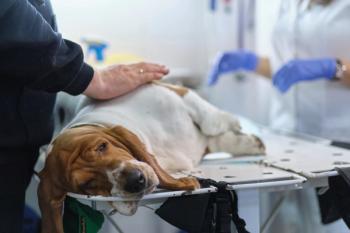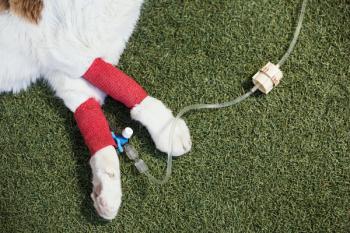
Three new breeds join AKC
Three new breeds were added to the roster of American Kennel Club-registered dogs for 2009, and open breed registration for each will be available until 2012.
RALEIGH, N.C. — Three new breeds were added to the roster of American Kennel Club (AKC)-registered dogs for 2009, and open breed registration for each will be available until 2012.
Irish Red and White Setter: A native of Ireland that was once thought to be extinct, the Irish Red and White Setter is kind and friendly, but has been linked to genetic health issues like cataracts and hip dysplasia.
The Irish Red and White Setter, the Norwegian Buhund and the Pyrenean Shepherd bring the list of registered AKC breeds to 161. Though they will be new to official competitions this year, each has a long history and distinct characteristics.
The Irish Red and White Setter is a sporting-group breed recognized as the AKC's 159th. A native of Ireland, the breed has had its own club since 1944, according to the AKC, but was so outnumbered by the Red Setter in the late 19th century it was thought to be extinct.
Pyrenean Shepherd: This breed is energetic and loyal. A fairly healthy breed, two of these dogs alone reportedly can guard a flock of 1,000 sheep.
Some health issues associated with the breed, according to Dr. Angela Hughes, a veterinary geneticist in Davis, Calif., are: Canine leukocyte adhesion deficiency, an auto-somal recessive disease attributed to a genetic mutation in both Irish Setters and Irish Red and White Setters that causes immunodeficiency and can be lethal if a dog develops an infection; an inherited form of cataracts; a tendency to be affected by autoimmune thyroiditis; and limited reports of hip dysplasia and von Willebrand's disease. The temperament of the Irish Red and White Setter is kind and friendly, with a strong sense of determination and high spirit, according to the AKC.
The 160th AKC breed, the Norwegian Buhund, is a high-energy and strong animal with great stamina that often acts as a self-appointed watchdog, according to the AKC. A member of the herding group, it is known to be self-confident, alert, lively and affectionate. It may also be known as the Norsk Buhund and the Norwegian Sheepdog, and first appeared in Norway as a general farm dog. Its coat is thick, but, aside from heavy shedding a few times a year, requires little maintenance, says the AKC.
Norwegian Buhund: This Spitz-type dog is characterized by its prick-up ears and curled tail. Limited disease information about the breed is available, but Norwegian Buhunds have been known to be trained as service dogs for the handicapped and police.
The Norwegian Buhund is a Spitz-type dog, with prick-up ears and a curled tail. Aside from farm and herding skills, the breed can be trained as service dogs for the handicapped and police.
Limited disease information for the Norwegian Buhund can be found, says Hughes, but clubs have reported instances of inherited eye and hip problems. The breed may be susceptible to pulverulent nuclear cataracts, but Hughes says reports of hip dysplasia may be of greater concern because the dog is a working breed. A few cases of epilepsy also have been reported, Hughes says.
Pyrenean Shepherds, among the herding group, are bred in two varieties — the smooth-faced and rough-faced; both can show up in the same litter. The 161st AKC breed originated in the French Pyrenees and has been known since medieval times as a sheep herder. The breed generally is distrustful of strangers, according to the AKC, but can be socialized and is extremely loyal to the point where it can be very sensitive to an owner's moods and insist on being included in all the owner's activities.
Energetic and active, just two Pyrenean Shepherds can guard a flock of 1,000 sheep and cover up to 25 miles a day, the AKC says.
The breed is fairly healthy, according to Hughes, who says only occasional cases of hip dysplasia, epilepsy, sub-luxated patellae, patent ductus arteriosus and progressive retinal atrophy have been documented.
It's a long road to breed recognition in the AKC, but there is no set timeline for approval. National breed clubs must send a written request to the AKC with documentation, including a written history, breed standard and photographs.
Breeds normally compete in the Miscellaneous Class for one to three years before becoming an official AKC breed, but there is no official time requirement.
Newsletter
From exam room tips to practice management insights, get trusted veterinary news delivered straight to your inbox—subscribe to dvm360.



